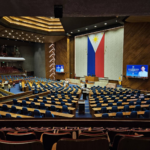
MANILA — The Department of Energy (DOE) stated that there must be no rotational blackouts this summer despite expectations of thin power reserves leading to yellow alerts.
Thin power reserves usually occur during the dry season or summer months when temperatures are higher and demand increases.
“As you know, our power outlook during summer is that there is a thin difference between supply and demand,” DOE Undersecretary Rowena Guevara said during the Laging Handa public briefing yesterday.
“Based on our power outlook last January, we do not see such situation… What we have are possible yellow alerts in Luzon and Visayas, but not brownouts,” she added.
Based on its 2023 outlook which factors in the projected forced outage ranging from 500 to 600 megawatts for the entire year along with the operation of existing and committed power plants, the DOE earlier said that the Luzon grid could encounter yellow alerts for several weeks this year, including the entire month of May.
For the Luzon grid, the critical dates for the year are week 11 in March, weeks 13 and 17 in April, the whole month of May, 22nd and 23rd weeks in June, week 35 in September, week 42 in October, and week 47 in November.
A yellow alert will be raised when there are not enough reserves to cover the largest running generating unit at the time, but does not necessarily lead to power outages.
Red alert, on the other hand, is placed over the grid when the supply to demand balance further worsens, which can lead to rotating power interruptions.
Power transmission operator National Grid Corp. of the Philippines (NGCP) last week has also warned of thin power supply this summer due to higher demand.
Guevara said the DOE and NGCP have already talked to power generators so they could schedule the maintenance of their plants outside of summer.
“So that by summer, no plant will have a maintenance shutdown. We talked to our generators to remind them that this summer, all of them should be running,” Guevara added.
Guevara said the DOE is likewise pushing for demand-side management programs for various sectors to help ease the expected tightness of supply in the summer months.
“For summer, it is not only our power industry that needs to help each other, but our consumers as well. They should conserve and use efficient technologies in their homes or for commercial and industries,” she said.















